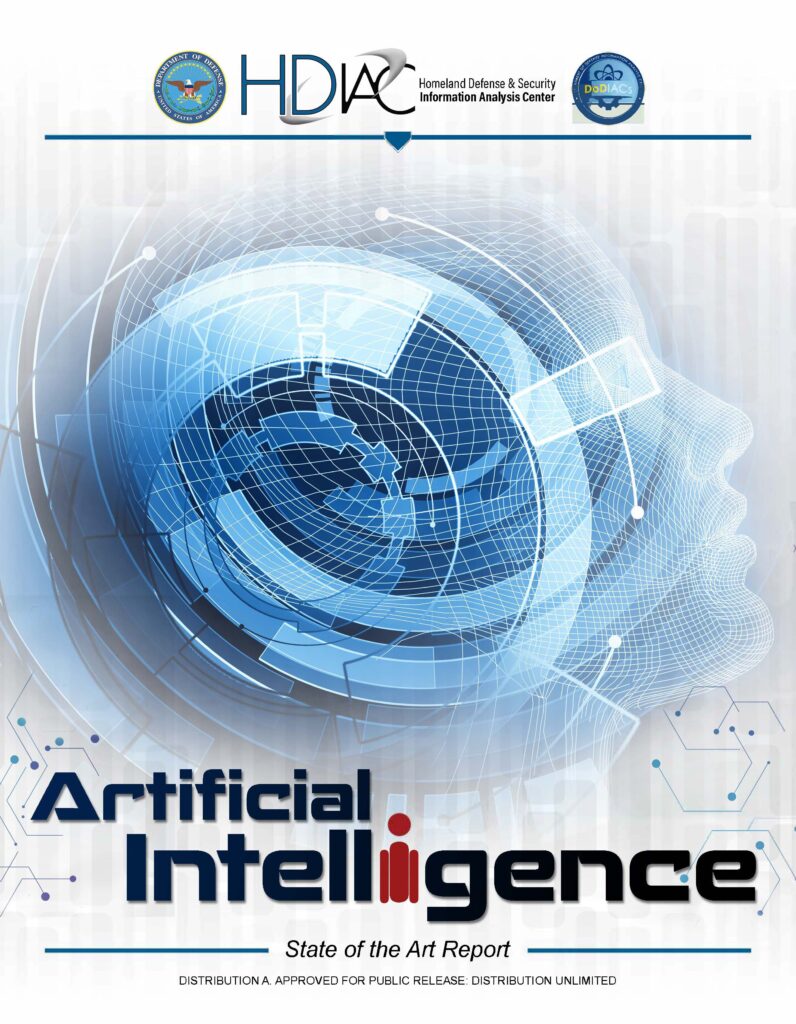an email newsletter released every month highlighting the latest articles, events, technical inquiries, and voices from the community
Artificial Intelligence and Machine Learning for Defense Applications

Posted: April 11, 2019
This State of the Art Report focuses on applications of Artificial Intelligence (AI) that are relevant to DoD and other governmental agencies that share similar goals, such as the U.S. Department of Homeland Security and the Intelligence Community. HDIAC collaborated with subject matter experts to obtain interpretations on relevant applications of AI to DoD and other agencies that could similarly incorporate AI into their operations. Discussions narrowed on relevant applications that have been in use for the past three years as well as advances that could become commercialized within the next 18–24 months. Given the vast amount of information, this report is not all-inclusive and is only a survey of prominent developments.
Recent advances in the field demonstrate new AI capabilities, such as sight, speech, and even moral/ethical reasoning [5-7]. These advances all show a common theme that machines are able to learn, adapting or amending their predetermined programming based on new input. The ability for machines to learn can be incorporated into weaponry and other applications used within DoD to support DoD strategy. AI is redefining the way wars are fought and won, as has been the case with many emerging technologies throughout history.
Although AI is often thought of as a part of computer science and typically viewed from a cyber perspective, applications of AI are relevant to all eight HDIAC focus areas. This report covers applications to Alternative Energy; Biometrics; Chemical, Biological, Radiological, and Nuclear Defense; Critical Infrastructure Protection; Cultural Studies; Homeland Defense and Security; Medicine; and Weapons of Mass Destruction (WMD). In some cases, the discussions group together areas that either overlap well or where information on AI applications is thin, and it made more sense to integrate relevant areas in order to provide a more robust perspective.
Focus Areas
Stay informed when a new SOAR is released
Subscribe to our upcoming state-of-the-art reports

